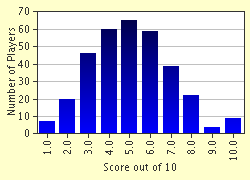Quiz Answer Key and Fun Facts
1. Which of these Biblical matriarchs was the mother of Israel (formerly known as Jacob)?
2. A famous story by author James Baldwin tells of the mother of the Gracchi (tribunes of the plebs in ancient Rome), who was rumored to be poor because she dressed simply and wore no jewels. When a friend asked if this rumor was true, she gathered her two sons to her side and replied "No, I am not poor, for here are my jewels. They are worth more than all your gems. " What was this mother's name?
3. Mary, the mother of Jesus, is probably the most well-known and frequently depicted mother-figure in history. In which of these famous images is she depicted as pregnant?
4. Which of the six wives of English sovereign Henry VIII bore him the son he so longed for, and died shortly after?
5. George Washington is generally regarded by Americans as the "Father of our Country". By right, his wife Martha Custis Washington should likewise be regarded as the "Mother of our Country". When she married George, Martha was a widow with two children; did she and George have any children together?
6. The name Bertha Faber is probably unfamiliar to most of you; however nearly all of you have probably heard this famous lullaby, which was written for her infant son Hans in 1868.
7. This famous American "mother" was born in Ireland and became a tireless activist on behalf of labor reform and worker's rights after losing all four of her children (and her husband) in a yellow fever epidemic. Who was she?
8. The face of this famous statue is believed to be a likeness of the sculptor's mother. Which statue is it?
9. Anna Matilda Mc Neill was the maiden name of the mother of this artist, whose most famous painting is a portrait of Anna.
10. Which celebrated African-American entertainer adopted several children from different parts of the world, whom she called her "rainbow tribe"?
Source: Author
jouen58
This quiz was reviewed by FunTrivia editor
bloomsby before going online.
Any errors found in FunTrivia content are routinely corrected through our feedback system.


